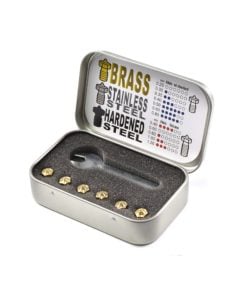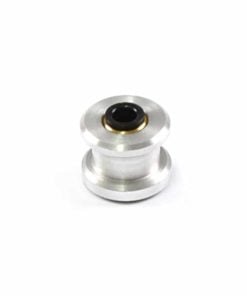Clearance – RADDS 32-Bit Controller Board v1.5
RADDS (RepRap Arduino-Due Driver Shield) is a next generation 32-bit 3D printer electronic controller board. Traditionally for 3D printers 8-bit electronics have been used, the most common combination is an Arduino MEGA2560 with a RAMPS 1.4. RADDS works much in the same way to a RAMPS board, but instead of interfacing with a MEGA2560, it sits on top of a much more powerful 32-bit Arduino Due.
RADDS is now up to version 1.5, and is now considered incredibly stable allowing you to transition into the 32 Bit era with ease. RADDS has a large amount of connection points, it allows up to 6 independent stepper motors drivers. At maximum, this means you can operate a Delta, Cartesian (with dual Z-Axis), or other 3 axis 3D printer with 3 separate extruders. In addition to this, you can also run 2 separate PWM controllable fans, as well as a heated bed.
10 – 25V can be supplied to the RADDS board without the need for any additional modification and the heated bed MOSFET can support up to 15A without a heatsink. Therefore if you use a 24V power supply, you can run a 360W heated bed without the need for any additional relays.

A 32-BIT Controller

With 3D printers becoming ever more advanced, 8-bit controllers are being pushed to their limits. For some 3D printers, especially deltas, this means they have to be slowed down because the 8-bit controller has not got the processing power to run it any quicker. Speed is not only affected, but print quality can improve as well, a 32-bit controller can offer much smoother operation and allow higher levels of micro stepping.
RADDS interfaces with an Arduino Due, which is based on an Atmel SAM3X8E ARM Cortex-M3 32-bit CPU. The Arduino Due has an 84MHz CPU Clock, 96 KBytes of SRAM, and 512 KBytes of flash memory. This extra horse power allows for much higher stepping speeds, for instance the maximum steps per second of an 8-bit system is 16000, with 32-bit around 400000 steps/s is possible. This means micro stepping of 1/64 or even 1/128 is now achievable.
8-bit controllers have a 5V operating voltage, with most 32-bit controllers, including RADDS + Due, the operating voltage is 3.3V. If you are switching from an 8-bit system to 32-bit, then some of your other electronics may not be compatible, such as Endstops and LCD’s. Usually they can be made compatible with some simple hacks. However if this isn’t for you, we stock 32-bit ready Hall Effect Endstops and LCD Smart Controller, these will work with RADDS with zero modifications needed. In addition, all our drivers are compatible with RADDS.

FEATURES
- Interfaces with an Arduino Due.
- 10 – 25V input voltage.
- Up to 6 independent stepper motor driver outputs, 3 Axis + 3 Extruders, with optional dual motor driven Z-Axis and E3 Extruder.
- Compatible with A4988, DRV8825, Silencioso, and RAPS128 stepper drivers.
- 6 limit switch inputs.
- 5 thermistor inputs and an ADC (Analog to digital converter).
- 6 PWM MOSFET outputs, 3 x 15A (Extruder’s), 2 x 15A (Fans), 1 x 15A (Heated Bed).
- 3 Servomotors outputs.
- On-board Micro-SD slot.
- LCD Screen can be connected.
- EEPROM available.
- 8 available digital pins.
- I2C, SPI, CAN, DAC, RS232 outputs.
- Catch diodes on MOSFET’s.
- Car-fuses instead of thermos fuses.
SOFTWARE
There are a few options for the firmware, either Repetier, Marlin4Due Or RepRapFirmware. Marlin4Due is still only experimental, therefore it is recommended that you use Repetier.
Documentation
1 review for Clearance – RADDS 32-Bit Controller Board v1.5
Only logged in customers who have purchased this product may leave a review.
















Bob Salter (verified owner) –
Great board, will be getting more